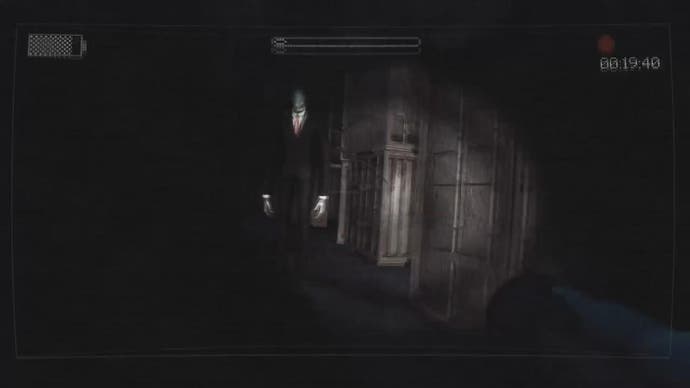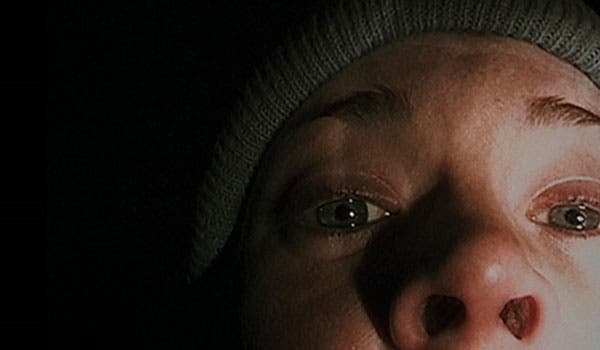How Slender gave gaming its Blair Witch moment
Spooks you, sir.
I'm doing something I swore I'd never do. No, not that. I'm replaying Slender.
More accurately, I'm replaying Slender: The Arrival, the more polished, more structured, less interesting evolution of Parsec Productions' original minimalist creep-em-up, which has now arrived on PlayStation 4 and Xbox One.
The reason I swore I'd never revisit Slender isn't because I'm a massive wuss who scares easily, but because when I first encountered the game back in 2012, I quickly pegged it as a game that would not lend itself to repetition. Born from SomethingAwful and a CreepyPasta meme, bolstered by the power of digital urban myth, that first indie game was not overly burdened with gameplay. You were lost in a forest. The sinister blank-faced Slenderman was out there with you, all motionless menace and Mr Tickle arms, and it was up to you to find eight journal pages that would reveal the truth about your supernatural nemesis.
It was brilliantly simple and, at the time, thrillingly different. Horror gaming up to that point had, more or less, been defined by Resident Evil and other Japanese survival horror titles. They had jump scares, they had gore and - certainly in the case of Silent Hill - they had an endearing off-kilter weirdness. But by the 2010s, they had also become predictable, their rough edges smoothed out, their simple scares weighed down with yet more backstory and lore with every new release.

Slender came along and ditched all of that. It reduced horror gaming to its purest essence, the delicious panic-inducing thrill of being pursued that has endured since Pac-Man was first hunted by Blinky and his ghostly pals. While mainstream horror games had become bombastic blockbuster productions, Slender was grimy, almost punk in its outlook. It felt primal.
As a lifelong horror movie nut, I couldn't help but see it in terms of cinema. The likes of Resident Evil had become the equivalent of the 1980s slasher movies; once terrifying and fresh, now safe and mainstream. In the late 1990s, icons like Freddy, Jason, Michael Myers, Leatherface and Chucky were a joke, endlessly recycled for a fanbase engaged more through habit and nostalgia than any sense of terror. Scream breathed a last gasp of life into the genre, tinged with the halitosis of irony, but that quickly deflated.
Then along came The Blair Witch Project. Now, call me psychic, but I'm pretty sure a lot of readers just rolled their eyes, scrolled to the bottom and began writing their comments about how the movie is overrated and not scary and dumb and just shut up. For a lot of people The Blair Witch Project did not work. At all. For me, it worked perfectly.
I was lucky enough to see it before it really became hyped as The Scariest Thing Ever. I'd heard about it online, from US movie websites, all of which said the best way to experience the film was to go in with no prior knowledge, and no expectations. And that's what I did. I got tickets to a preview screening at Sheffield's Showroom cinema, several weeks before its UK wide release.
It scared the crap out of me.

And I've never watched it since. Not because I don't want to be scared again, but because I know it won't scare me again. It's a piece of art that really only works under specific circumstances, and even then probably only once. Watching it again, knowing what's coming, I fully expect to be annoyed by the shrill characters and their dumb decisions, and driven to distraction by the shaky handheld camera work.
That's how I feel about Slender. It worked for me once, and that's great. Not every creative endeavour needs to stand up to repeat experiences in order to have value. What's interesting is that much as Blair Witch spawned a slew of imitations and a problematic sequel (much like Slender: The Arrival, in many ways) it also revived and refreshed the genre, putting the focus back on indie productions and making audiences more receptive to the idea that horror didn't just have to be a guy in a mask hacking teens to death.
Slender has done much the same. There are dozens of cheap knock-offs whose inspiration can be blatantly traced back to that first excursion into the forest, but there are also games that have taken that kernel of an idea and run with it in exciting directions. Outlast glosses it up, while the likes of Dreadhalls translate it to the almost-too-perfect environment of VR. Even something like Gone Home dressed up its domestic drama with horror flourishes, using a sense of slightly disingenuous creeping dread to hook players who might not have signed up for teen heartbreak.

Consider also the success of Five Nights at Freddy's, a horror game juggernaut that has achieved massive popularity despite flying beneath the games media radar. It's no coincidence that this new wave of horror games works best as a visceral experience, ideal for the word of mouth and "watch me play" fandom that thrives virally on YouTube and social media.
Most notably, at least for us adult hardcore gamers, is the fact that when Hideo Kojima and Guillermo Del Toro released P.T, the playable teaser for Silent Hills, their reboot of Konami's classic horror game franchise, they did so not with the fixed third-person cameras and melee combat associated with the series, but with deeply unnerving first-person exploration where the sight of a white-faced figure in a tight black suit would have seemed perfectly appropriate.
You may think Slender is dumb, that is has no real gameplay, that it's just cheap jolts and borrowed atmosphere. You may have a point. That's OK. Horror is a weird, fluid, subjective genre at the best of times. Often, mould-breaking moments have been and gone before they're really noticed, and trying to play catch up just leaves you wondering what the fuss was about.
Slender's moment has almost certainly passed, but it's done its job. It's nudged horror gaming onto a different path, added another area to explore. You may not have been impressed with its first incarnation, but you'll benefit from its influence somewhere down the line.

